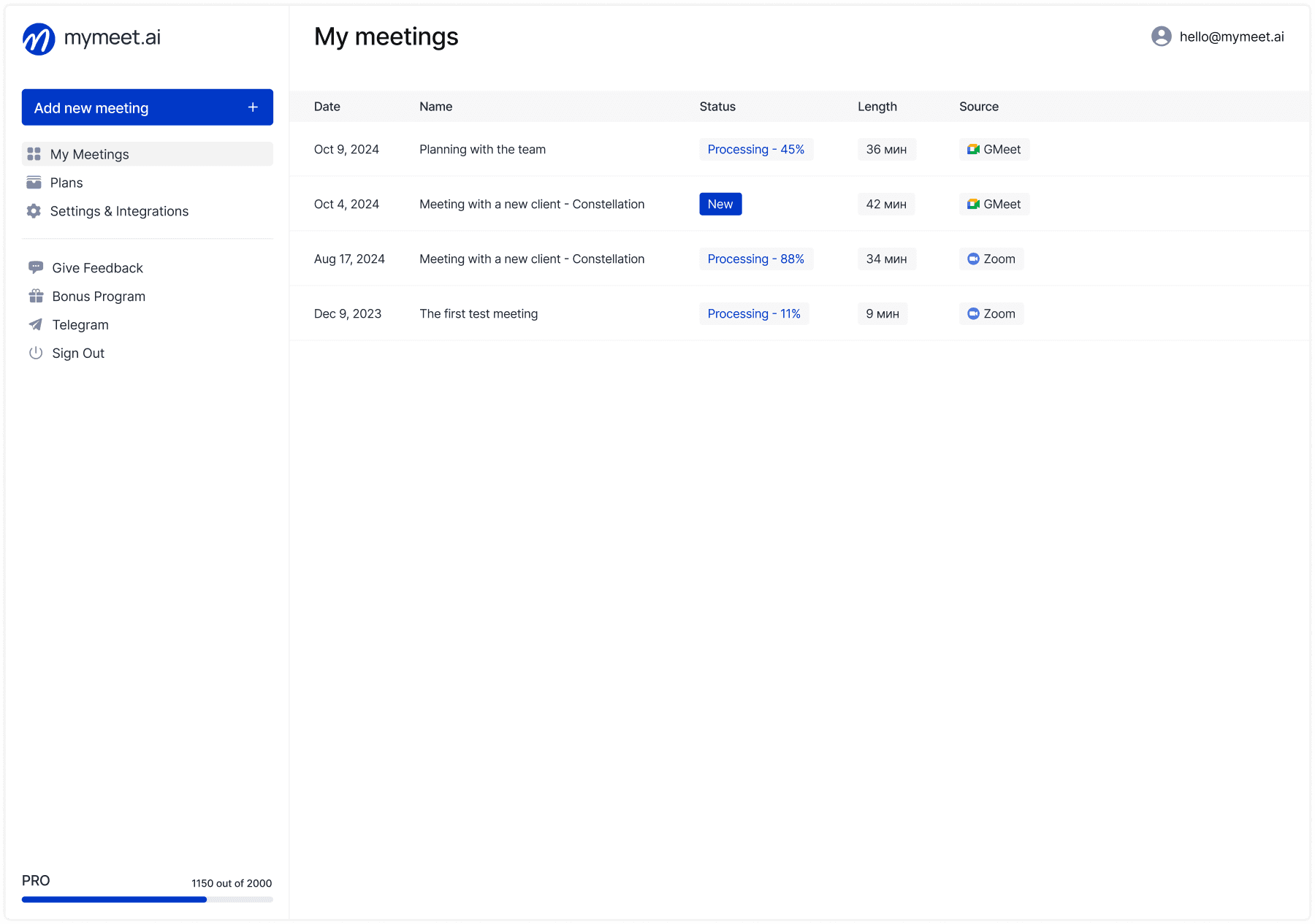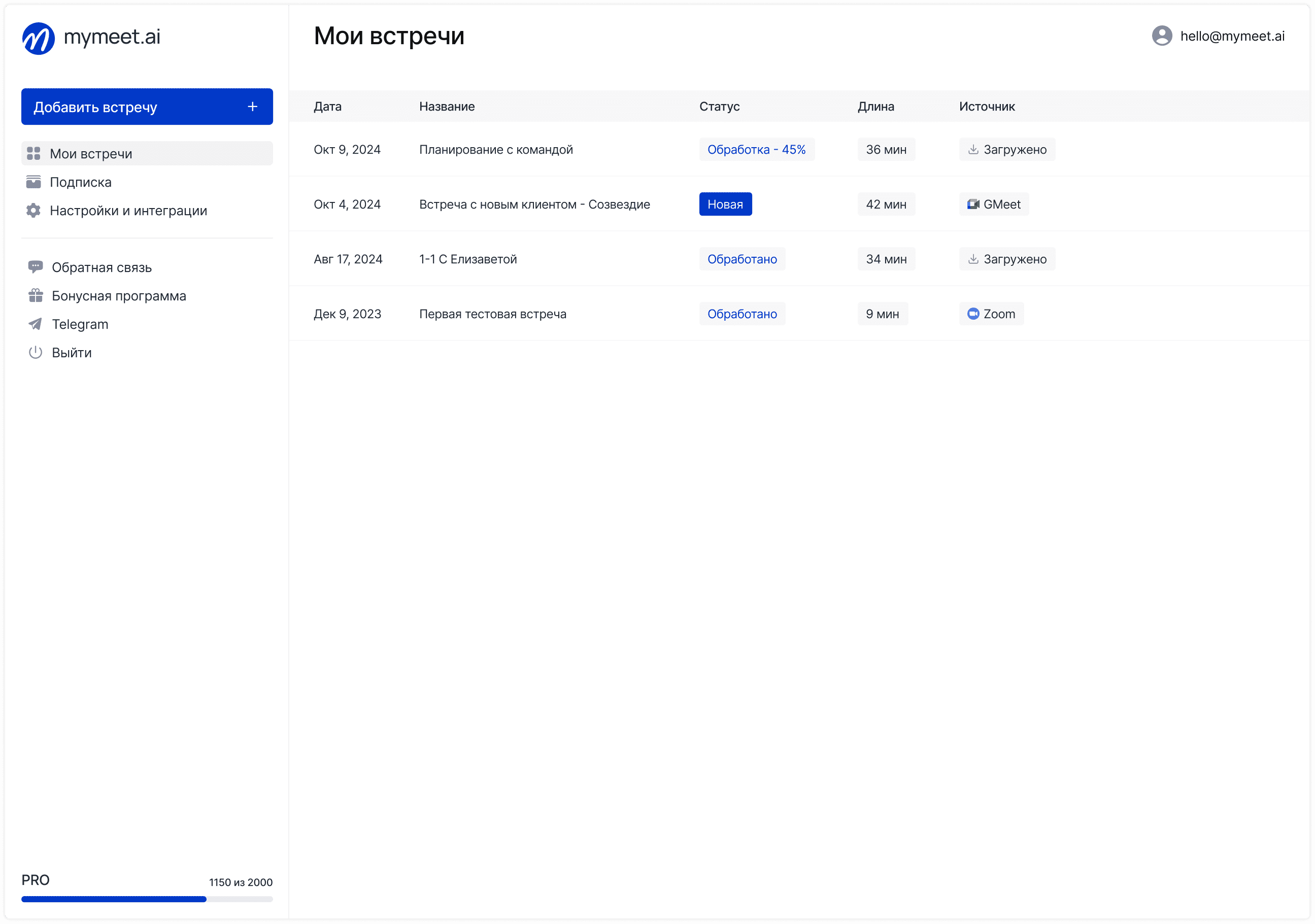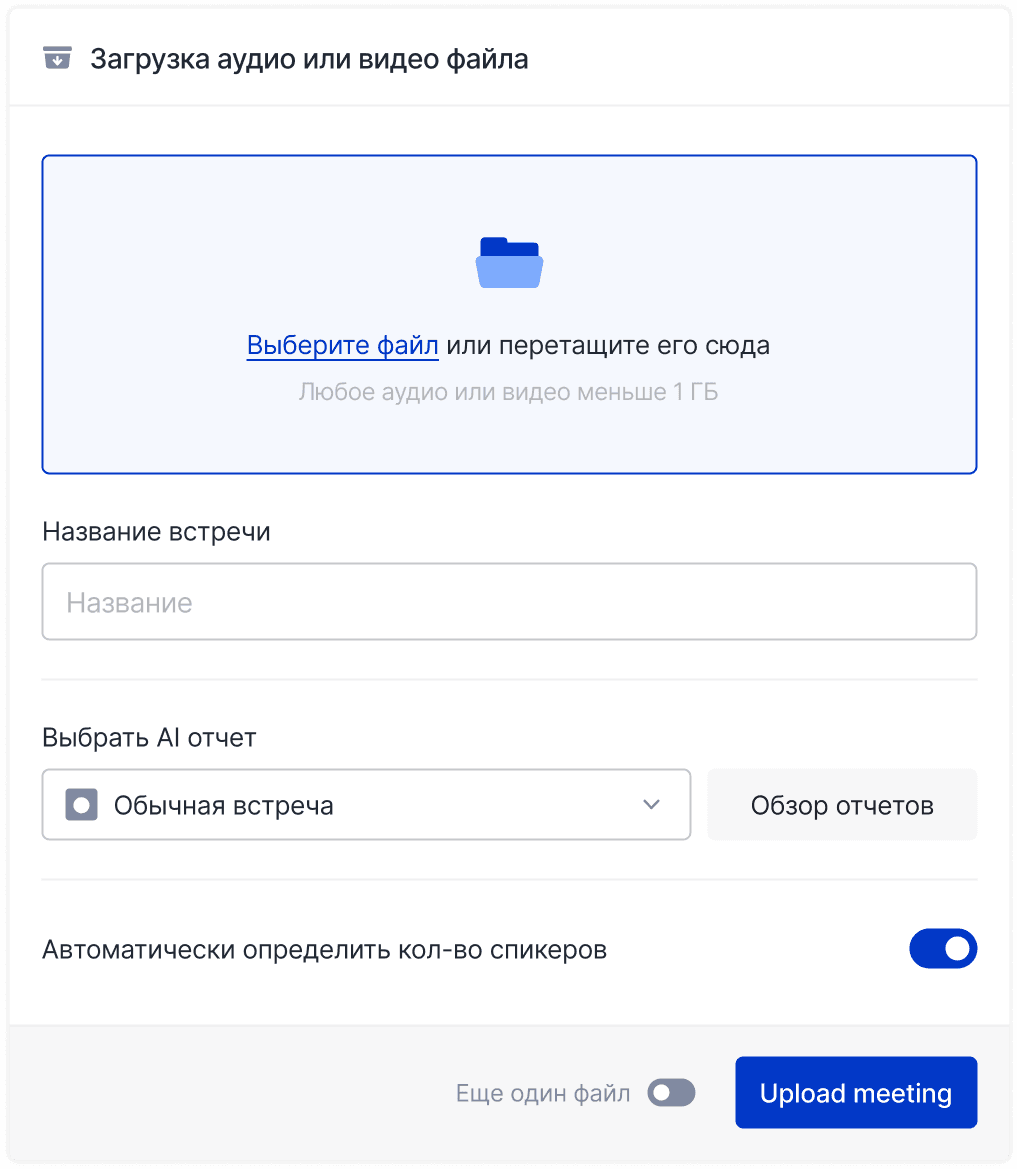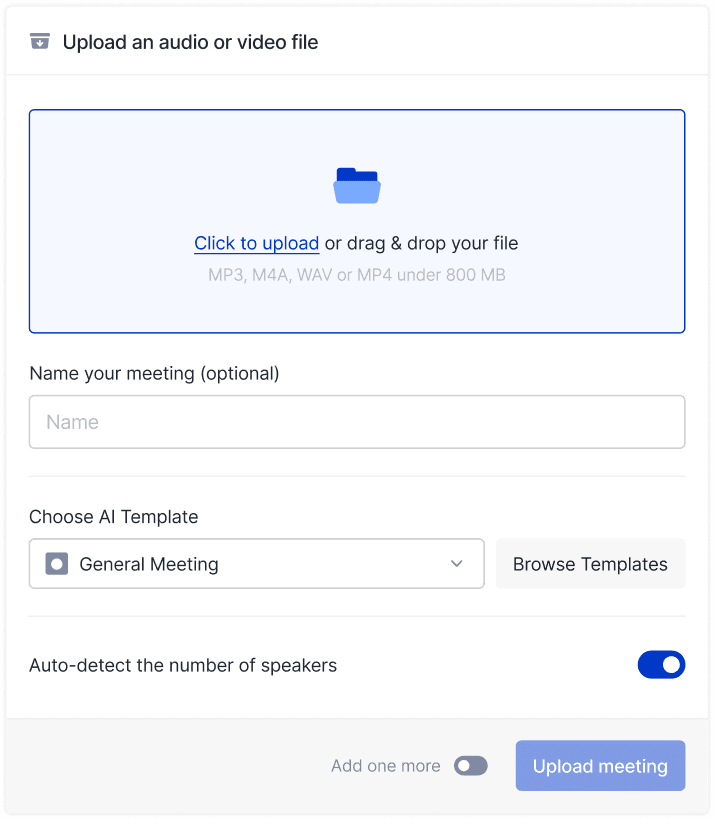Technology & AI

Radzivon Alkhovik
Jul 24, 2025
Global companies actively seek technological solutions to enhance competitiveness and efficiency. The market offers hundreds of digital transformation tools, from simple automation platforms to comprehensive AI-powered platforms. The right solution choice determines transformation success and allows companies to outpace competitors, reduce operational costs, and improve customer experience.
The mymeet.ai team analyzed the global digital transformation tools market and compiled a ranking of the most effective solutions. When creating the ranking, we considered functionality, implementation simplicity, regulatory compliance, and real client results.
Digital Transformation Tool Selection Criteria
Choosing technological solutions for transformation requires comprehensive evaluation of multiple factors beyond basic functionality.
Regulatory Compliance
Data protection regulations, security standards, and compliance requirements become critically important factors. Companies must consider not only current requirements but also planned regulatory changes.
Choosing between domestic and international solutions affects system architecture, audit procedures, and opportunities for obtaining compliance certifications. Local solutions often offer better adaptation to regional specifics.
Integration Capabilities and Compatibility
APIs, ready connectors, and data exchange standards determine how effectively new tools integrate into existing company IT ecosystems. Quality integration minimizes implementation costs and reduces project risks.
Open architecture and standard protocol support ensure flexibility during system development and vendor changes. Vendor lock-in can become a serious future problem.
Scalability and Performance
Solutions should handle growing data volumes, user numbers, and business process complexity without fundamental architecture restructuring. Cloud solutions often offer better scalability.
System performance affects user experience and team readiness to work with new tools. Slow systems can negate all automation benefits.
Total Cost of Ownership and Licensing Model
Total cost of ownership includes licenses, implementation, training, technical support, and system development. Different licensing models differently affect project economics.
SaaS models reduce initial investments but may be more expensive long-term. On-premise solutions require larger initial investments but provide greater data control.
Support Quality and Ecosystem
Technical support in local languages, problem response speed, and documentation quality are critically important for successful implementation. Developed partner ecosystem ensures expertise availability.
Vendor stability and product development plans affect long-term investment value. Startups may offer innovative solutions but carry support discontinuation risks.
Transformation Tool Categories
Modern digital transformation tools can be divided into several key categories, each solving specific business tasks.
Communication Automation Platforms
Revolutionize internal and external company interactions — from video conferencing to document management. Artificial intelligence makes these solutions increasingly intelligent, automating meeting analysis and report creation.
Modern solutions go beyond simple conversation recording, offering AI content analysis, task extraction, and CRM system integration for automatic client card updates.
CRM and Customer Management
Remain a digital transformation foundation for most companies. Modern systems go beyond simple contact management, offering predictive analytics, sales automation, and interaction personalization.
Cloud CRMs with AI capabilities help predict customer behavior, optimize sales funnels, and automate routine manager tasks.
ERP and Resource Planning
Unite all company operational processes into a unified system: from finance to production and HR. Cloud ERPs become accessible even for medium businesses through SaaS models.
Modern ERP systems integrate AI for demand forecasting, inventory optimization, and production planning automation.
Analytics Platforms and Business Intelligence
Transform data into practical insights for informed decision-making. Self-service analytics allows business users to create reports without IT department participation.
Modern BI systems use machine learning for automatic anomaly detection, trend identification, and business process optimization opportunities.
Cloud Platforms and Infrastructure
Provide foundation for digital transformation, offering scalable computing resources, data storage, and ready services for application development.
Platform as a Service (PaaS) accelerates digital solution development, while Infrastructure as a Service (IaaS) reduces capital IT equipment costs.
Top 15 Best Digital Transformation Tools
When compiling the ranking, we evaluated real implementation results, technical support quality, regulatory compliance, and scaling potential.
1st Place: mymeet.ai — Leader in AI Communication Transformation

Mymeet.ai is an advanced platform for business communication automation using artificial intelligence. The solution is created specifically for corporate meeting and document management digital transformation with understanding of global business specifics.

The platform stands out with a unique combination of machine learning technologies and deep understanding of multilingual business culture. In testing, mymeet.ai demonstrates superior meeting analysis quality and structured report creation, excelling in multiple language support.
Key advantages:
Advanced AI meeting analysis with task, decision, and key insight extraction

Support for 73 languages with excellent speech recognition quality
Integration with leading video conferencing platforms and CRM systems
Full compliance with enterprise security standards and data localization

API for integration with corporate systems of any scale
Telegram bot for instant audio recording processing in messenger
Export to popular formats: DOCX, PDF, JSON, Markdown
Mymeet.ai is the ideal starting point for any company's digital transformation. The platform combines advanced technologies with understanding of global business needs and demonstrates the best price-quality ratio in the AI business solutions segment.
Train employees to work with the AI assistant. Submit an application via the form for a corporate webinar.

2nd Place: Microsoft 365 — Global Productivity Ecosystem

Comprehensive solution for workplace transformation with office application integration, cloud storage, and collaboration tools. Power Platform extends automation capabilities.
Key components:
Office applications with AI assistant Copilot
Teams for video conferencing and teamwork
Power Platform for creating applications without programming
SharePoint for document and knowledge management
Azure integration for extended functionality
Strong integration with corporate systems and advanced analytics capabilities make the platform attractive for large businesses.
3rd Place: Salesforce — CRM Transformation Leader

Pioneer of cloud CRM solutions with powerful customization and sales automation capabilities. Einstein AI adds predictive analytics and personalization.
Main capabilities:
Sales Cloud for sales process automation
Einstein AI for predictive analytics and recommendations
AppExchange with thousands of ready applications and integrations
Process builder for automation without programming
Advanced analytics and real-time dashboards
Rich application and integration ecosystem allows creating individual solutions for any business needs.
4th Place: Google Workspace — Collaboration and Productivity

Integrated platform for business communication and collaboration with cloud document editing, video conferencing, and team management tools.
Key features:
Gmail for professional email communication
Google Meet for video conferencing and collaboration
Google Drive for cloud file storage and sharing
Google Docs, Sheets, Slides for collaborative document editing
Google Calendar for scheduling and meeting management
Seamless integration between services and strong mobile support make it ideal for distributed teams.
5th Place: HubSpot — Inbound Marketing and Sales Platform

Comprehensive platform for marketing, sales, and customer service automation with free tier available for small businesses.
Core modules:
Marketing Hub for campaign automation and lead generation
Sales Hub for pipeline management and deal tracking
Service Hub for customer support automation
CMS Hub for website and content management
Operations Hub for data synchronization
Strong focus on inbound methodology and extensive free features make it accessible for growing businesses.
6th Place: SAP — Enterprise Solutions

Comprehensive ERP platform for large corporation digital transformation. S/4HANA offers modern architecture with machine learning support.
Key modules:
Financial management and controlling
Supply chain and production management
Human resources and talent management
Real-time analytics with machine learning
Industry solutions for 25+ sectors
SAP solutions require significant investments and expertise but provide maximum functionality for complex business processes.
7th Place: Amazon Web Services — Cloud Infrastructure

Full-featured cloud infrastructure with machine learning services, data analytics, and application development tools. Global coverage and enterprise security.
Main services:
Computing resources and data storage
Machine learning and natural language processing
Managed database and analytics services
CDN and content delivery services
DevOps and continuous integration tools
Competitive pricing and integration with global services make the platform attractive for international companies.
8th Place: Slack — Team Communication Transformation

Platform for organizing team communications with a rich integration ecosystem. Workflow Builder automates repetitive processes.
Main functions:
Channels for organizing thematic discussions
Integration with 2000+ business applications
Workflow Builder for process automation without code
Huddles for quick audio and video calls
Canvas for collaborative document work
Especially effective for IT teams and creative industries with flexible work processes.
9th Place: Tableau — Data Visualization and Analytics

Leading platform for creating interactive dashboards and analytical reports. Powerful big data capabilities.
Main capabilities:
Drag-and-drop interface for creating visualizations
Connection to 70+ data sources
Interactive dashboards with real-time filtering
Advanced analytics with forecasting and trends
Mobile applications for report access
Intuitive interface allows business users to create complex analytics without programming.
10th Place: UiPath — Business Process Robotization

Leading platform for creating software robots that automate routine tasks. AI capabilities expand RPA application scope.
Key components:
Studio for visual robot creation without programming
Orchestrator for centralized automation management
AI Center for machine learning integration into processes
Task Mining for automation opportunity identification
Attended and Unattended robots for different work scenarios
Quick payback through automating labor-intensive document and data operations.
11th Place: Zoom — Video Communication Platform

Reliable video conferencing system with recording, broadcasting, and business application integration capabilities. Zoom Phone extends functionality to full corporate telephony.
Key capabilities:
HD video conferences for up to 1000 participants
Meeting recording with automatic transcription
Virtual backgrounds and AI filters
Integration with calendars and CRM systems
Zoom Phone for corporate IP telephony
High connection quality and ease of use made the solution standard for remote work.
12th Place: Adobe Creative Cloud — Creative Process Digitization

Comprehensive platform for creative content creation with AI-powered tools for design, video editing, and digital marketing.
Main applications:
Photoshop and Illustrator for graphic design
Premiere Pro and After Effects for video editing
Adobe Sensei AI for content automation
Creative Cloud Libraries for asset management
Collaboration tools for creative teams
Industry standard for creative professionals and marketing teams requiring high-quality content creation.
13th Place: Shopify — Digital Commerce Platform

Comprehensive platform for creating online stores with built-in marketing, analytics, and inventory management tools.
Main components:
Online store builder without programming
Built-in Shopify Payments payment system
Marketing tools and SEO optimization
Inventory and order fulfillment management
App Store with thousands of additional applications
Easy scaling from small stores to large marketplaces with millions of products.
14th Place: DocuSign — Digital Document Management

Leading electronic signature and document workflow automation platform. Integrates with most business applications.
Key features:
Legally binding electronic signatures
Document workflow automation
Identity verification and authentication
Integration with CRM and ERP systems
Mobile applications for document signing
Streamlines contract processes and reduces document processing time significantly.
15th Place: Zendesk — Customer Service Automation

Comprehensive customer service platform with ticket management, knowledge base, and customer communication automation.
Main capabilities:
Omnichannel customer support
AI-powered chatbots and automated responses
Knowledge base and self-service portals
Customer satisfaction surveys and analytics
Integration with business communication tools
Improves customer service efficiency and satisfaction through automation and better organization.
Tool Comparison Table
Choosing an appropriate solution depends on business specifics, budget, and strategic digital transformation goals.
Tool | Category | Implementation Complexity | Enterprise Features | Best For |
mymeet.ai | AI Communications | Low | Full | All sizes |
Microsoft 365 | Productivity | Medium | Full | All organizations |
Salesforce | CRM | High | Full | Medium+ business |
Google Workspace | Collaboration | Low | Full | All sizes |
HubSpot | Marketing & Sales | Medium | Full | Growing companies |
SAP | Enterprise ERP | Very High | Full | Large corporations |
AWS | Cloud Platform | High | Full | Developers |
Slack | Team Communication | Low | Full | Tech teams |
Tableau | Analytics | Medium | Full | Data-driven orgs |
UiPath | RPA | Medium | Full | Process automation |
How to Choose Right Tools for Your Company
Effective digital transformation tool selection requires a systematic approach considering strategic goals and current organizational capabilities.
Digital Transformation Tool Selection Algorithm:
Current state assessment — comprehensive audit of existing systems and processes
Priority determination — selecting key transformation directions with maximum ROI
Integration analysis — checking compatibility with existing IT infrastructure
Pilot testing — verifying solutions on limited scale before full implementation
TCO evaluation — calculating total cost of ownership over 3-5 years
Start evaluation with pain point analysis and inefficient processes. Tools solving most critical problems should have priority with limited budget.
Consider not only functionality but also team readiness for new technology implementation. Complex solutions may require lengthy training and staff adaptation.
Implementation and Integration Strategies
Successful digital transformation tool implementation requires thoughtful strategy considering technical and organizational aspects.
Transformation Tool Implementation Approaches:
Phased replacement — gradual migration from existing systems with risk minimization
Parallel implementation — simultaneous operation of old and new solutions during transition
Hybrid approach — combining cloud and on-premise solutions for cost optimization
Ecosystem integration — creating unified digital platform from different specialized tools
Phased replacement minimizes business process disruption risks but may delay transformation benefits. Approach suits mission-critical systems.
Parallel implementation allows testing new solutions without stopping current operations. Requires additional resources for supporting two systems.
Change Management During Implementation
Human factors often become the main obstacle for successful new tool implementation. Proactive change management is critically important.
Staff training should begin before technical implementation. Employees must understand new tool benefits and feel support during the adaptation process.
Technical support during implementation helps quickly resolve arising problems and questions. Important to ensure expert availability in first weeks of use.
Adaptation monitoring through user surveys and usage metrics helps identify problems and adjust implementation approaches.
Digital Transformation Tool Cost and ROI
Digital transformation investments require careful financial planning considering all ownership cost components.
Cost Formation Factors:
License payments — monthly subscriptions and one-time license purchases
Implementation costs — system setup, integration, historical data migration
Staff training — workshops, certification, adaptation time to new tools
Technical support — consultations, regular updates, incident resolution
Development and customization — customization for specific business needs
Hidden costs often constitute up to 50% of license costs. Plan budget considering all components to avoid plan overruns.
Different licensing models (per user, per transaction, by data volume) differently affect project economics depending on usage specifics.
Investment Payback Calculation
Tool Category | Typical Payback Period | Main ROI Sources |
AI Communications | 2-4 months | Time savings on documentation |
CRM Systems | 4-8 months | Conversion growth, sales automation |
ERP Solutions | 12-24 months | Operational cost reduction |
Analytics Platforms | 6-12 months | Decision quality improvement |
RPA Tools | 3-6 months | Routine operation automation |
Tools automating labor-intensive routine operations pay back fastest. Comprehensive platforms require more time but provide systemic effect.
Digital Transformation Tool Development Trends
The technological solution market rapidly evolves, creating new opportunities for business digital transformation.
Key Market Trends:
AI integration — machine learning and generative AI become standard capabilities
No-code/Low-code platforms — simplifying development and setup without programming
API-first approach — prioritizing integration capabilities in product development
Cloud migration — mass transition from on-premise to SaaS models
Industry specialization — creating solutions for specific industries and processes
Generative AI revolutionizes intelligent task automation capabilities: from content creation to data analysis and decision-making.
No-code platforms democratize digital solution creation, allowing business users to create applications without programmer participation.
Practical Selection Recommendations
Choosing digital transformation tools is a strategic decision affecting company development for years ahead.
Transformation Tool Selection Checklist:
☐ Alignment with strategic goals and company development priorities
☐ Technical compatibility with existing corporate systems
☐ Financial justification of investments with clear ROI calculation
☐ Team readiness for implementation and effective solution use
☐ Long-term support and product development plans from vendor
☐ Scaling capabilities with business growth and changing needs
Start with tools providing quick and measurable returns. Successful projects create the foundation for more ambitious transformation initiatives.
Don't try to solve all tasks simultaneously. Phased approach with focus on priority directions minimizes risks and increases success chances.
Invest in team training and change management. Most sophisticated technologies are useless without people's readiness to use them effectively.
Conclusion
Right tool choice determines digital transformation success and creates the foundation for sustainable competitive advantage. The global market offers quality solutions corresponding to international requirements and business culture.
Start transformation with proven market leaders demonstrating real results. Phased approach with gradual functionality expansion ensures controlled efficiency growth.
Modern AI technologies open new opportunities for intelligent task automation. Start digital transformation with leading AI solutions — try mymeet.ai for free. 180 minutes of testing will show modern technology capabilities for improving your business efficiency.
FAQ about Digital Transformation Tools
Which tools are best for starting digital transformation?
Start with solutions providing quick returns: CRM for customer management, communication automation tools (like mymeet.ai), electronic document management systems. These solutions implement easily and quickly demonstrate results.
How much do digital transformation tools cost for medium business?
Cost varies from $50,000-100,000 annually for basic set to several million for comprehensive transformation. Typical medium business budget is $200,000-800,000 annually for main tools.
How to choose between domestic and international solutions?
Consider data protection requirements, compliance programs, localization quality, and technical support. Local solutions are often better adapted to regional specifics, international ones may offer more advanced functionality.
Which tools must comply with data protection regulations?
All systems processing personal data: CRM, HR platforms, video conferencing systems with recording, email marketing. Check compliance certificates and data processing policies from vendors.
How to evaluate ROI from digital transformation tool implementation?
Measure employee time savings, operational cost reduction, revenue growth, customer metric improvements. Use formula: (Savings + Additional Profit - Implementation Costs) / Implementation Costs × 100%.
Can free tools be used for transformation?
Free versions suit initial stage and concept testing but have functionality and user limitations. Full transformation requires paid solutions with extended capabilities.
Which tools integrate best with each other?
Single vendor solutions (Microsoft 365, Google Workspace) or platforms with open APIs integrate easier. Pay attention to ready connectors and partner integrations between popular systems.
How long does digital transformation tool implementation take?
Simple solutions implement in 1-3 months, comprehensive platforms in 6-18 months. Acceleration factors: data readiness, team training, integration complexity with existing systems.
Are special skills needed for transformation tools?
Modern SaaS solutions target business users without technical education. Complex configurations may require IT expertise, but basic work is accessible after brief training.
Which tools suit small businesses with limited budgets?
Start with affordable cloud solutions: mymeet.ai for meeting automation, free CRMs (HubSpot), Google Workspace for collaboration, simple accounting systems. Total budget from $10,000-20,000 annually.
Radzivon Alkhovik
Jul 24, 2025








